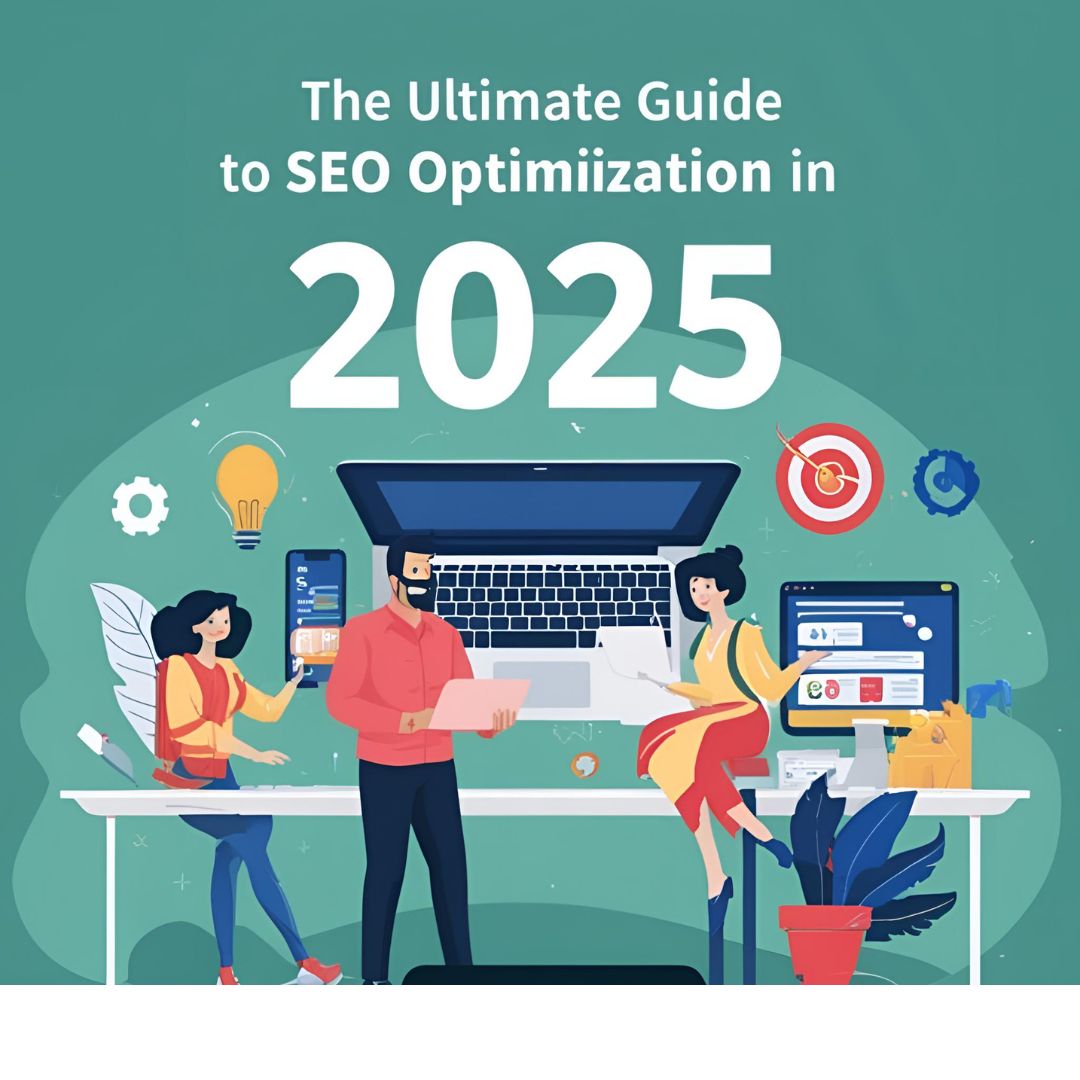Introduction to SEO
Search Engine Optimization (SEO) has emerged as a fundamental aspect of digital marketing, particularly in 2023, where the online landscape continues to evolve rapidly. At its core, SEO refers to the practice of optimizing websites to enhance their visibility on search engines like Google, Bing, and Yahoo. The primary objective of SEO is to increase organic traffic, which is vital for any business aiming to establish a strong online presence.
In today’s competitive environment, businesses that do not invest in SEO may find themselves overshadowed by competitors who do. SEO encompasses a variety of strategies and techniques aimed at aligning a website’s content with the algorithms used by search engines to rank pages. This includes keyword research, on-page optimization, technical SEO, and link-building strategies. Collectively, these components work to improve a website’s ranking for relevant search queries, ultimately leading to increased traffic and greater conversion rates.
The importance of SEO is further amplified by the rising consumer reliance on digital search. Studies indicate that a significant percentage of users never scroll past the first page of search results, underscoring the need for businesses to ensure that their websites rank highly for targeted keywords. Moreover, as search engines evolve, the algorithms become increasingly sophisticated, requiring brands to adapt their strategies continuously. This continuously shifting landscape makes it imperative for marketers to stay updated with current trends and best practices to effectively leverage SEO.
Furthermore, SEO is not a one-time task; it is an ongoing process that demands regular analysis, adjustment, and refinement. By maintaining a consistent focus on SEO, businesses can improve their online visibility, enhance user experience, and ultimately drive more traffic to their websites. As digital marketing becomes even more prevalent in shaping consumer behavior, investing in SEO should be a top priority for any organization looking to thrive in the online marketplace.
Understanding Search Engine Algorithms
Search engine algorithms are complex systems that retrieve data from vast databases to provide users with the most pertinent and valuable results based on their queries. These algorithms utilize a variety of ranking factors to determine the relevance and quality of web pages. Key factors influencing rankings include relevance, authority, and user experience, which play significant roles in determining how websites are indexed and displayed to search engine users.
Relevance is chiefly concerned with how well a web page matches the user’s search intent. This is achieved by incorporating keywords and related phrases within the content, headings, and metadata. Content must not only contain these targeted terms but also provide comprehensive and informative answers to user inquiries. High-quality content that addresses a specific query effectively is more likely to rank higher in search results.
Authority, on the other hand, is often gauged by the number and quality of backlinks pointing towards a site. Backlinks from reputable sources signal to search engines that the content is trustworthy and valuable. Domain authority, which indicates the overall strength and credibility of a website, is critical in the competitive landscape of SEO. Websites that consistently produce reliable content and garner high-quality backlinks tend to position themselves favorably in search rankings.
User experience is increasingly crucial in the ranking process, with search engines prioritizing sites that offer a seamless and engaging experience. Factors such as page load speed, mobile-friendliness, and navigational ease are assessed to gauge how users interact with content. Websites that provide an optimal user experience are rewarded with higher rankings, while those that falter in this area may find themselves at a disadvantage.
Search engine algorithms are not static; they evolve constantly to improve search results and user satisfaction. This necessitates ongoing SEO strategies as optimization practices that sufficiently serve today’s algorithms may become obsolete tomorrow. Adaptation to algorithm updates is crucial for maintaining visibility in search results and effectively engaging target audiences.
On-Page SEO Techniques
On-page SEO refers to the practice of optimizing individual web pages in order to rank higher and earn more relevant traffic in search engines. A critical step in this process is keyword research, where the selection of appropriate keywords directly influences your page’s visibility. Utilizing tools such as Google Keyword Planner or SEMrush helps identify keywords that not only reflect your content but also align with user intent. Once you have your keywords, it is essential to integrate them naturally within your content, including headings, subheadings, and body text to enhance relevance without compromising readability.
Next, content optimization plays a pivotal role in on-page SEO. High-quality, informative content that addresses the needs of your audience will promote user engagement, which is a significant factor for search engine rankings. Utilize synonyms and related phrases to enrich your writing and avoid repetitive wording, thereby increasing both the quality and breadth of content. Aim for a balance between keyword utilization and content clarity, ensuring that search engines understand the context while keeping readers engaged.
Meta tags, including title tags and meta descriptions, provide essential information to search engines and users alike. Crafting compelling title tags that incorporate your primary keywords can elevate visibility in search results. Similarly, an engaging meta description can improve click-through rates, as it functions as a brief advertisement for your page. URL structure should not be overlooked; clean, descriptive URLs that include keywords can enhance both user experience and SEO. A well-structured URL indicates to search engines what the page is about, further contributing to improved rankings.
Integrating these on-page SEO techniques effectively will not only optimize each page of your website but also enhance overall user engagement, leading to better search engine performance and ranking in 2023.
Off-Page SEO Strategies
Off-page SEO refers to activities conducted outside the boundaries of a website that can influence its rankings in search engine results. It primarily encompasses link building, social media engagement, and online reputation management. Each of these elements plays a vital role in enhancing a website’s authority and visibility, making them essential strategies for effective SEO in 2023.
Link building remains a cornerstone of off-page SEO. By acquiring high-quality backlinks from reputable sites, a website can significantly boost its credibility. Search engines view these links as endorsements that a site provides valuable content. Strategies to improve link building include guest blogging, influencer partnerships, and creating shareable content like infographics or research studies. Networking within a specific niche can also lead to improved opportunities for backlinks, positively affecting the site’s search rankings.
Social media engagement is another key aspect of off-page SEO. While social media signals do not directly affect search engine rankings, they foster a substantial increase in website visibility and traffic. Platforms such as Facebook, Twitter, and Instagram can be used to share content, engage with followers, and promote brand awareness. The more a website is shared on social media, the more likely it is to attract quality backlinks, creating a synergistic effect of enhanced visibility and increased authority.
Online reputation management is crucial for maintaining a positive image of a website. Customer reviews, testimonials, and brand mentions on various platforms can significantly influence a site’s trustworthiness. Actively managing feedback and engaging with customers can heavily impact a website’s SEO performance. Tools for monitoring brand mentions can help website owners stay informed about public perception, allowing them to address issues proactively. By incorporating these off-page SEO strategies, websites can build a robust foundation for increased search visibility, ultimately leading to greater success in search engine rankings.
Technical SEO Essentials
Technical SEO encompasses various components that ensure a website can be efficiently crawled and indexed by search engines. One of the critical aspects is site speed optimization. A fast-loading site not only enhances user experience but is also favored by search engines, significantly influencing rankings. To improve site speed, website owners should consider optimizing images, leveraging browser caching, and utilizing content delivery networks (CDNs). Reducing server response time and minimizing the use of redirects can also contribute to improved loading times.
In today’s digital landscape, mobile-friendliness is no longer optional but a necessity. With the majority of users accessing websites through mobile devices, search engines prioritize mobile-responsive designs. Implementing responsive web design practices ensures that content adapts to varying screen sizes, improving accessibility and usability. Furthermore, conducting mobile usability tests can identify potential issues, allowing site owners to address them quickly and effectively.
A secure connection is fundamental to technical SEO. Websites using HTTPS encrypt user data, fostering trust and security, which search engines recognize as a positive ranking factor. Transitioning from HTTP to HTTPS not only enhances data protection but also improves user trust in the website. Implementing SSL certificates is essential for achieving this level of security, thus contributing to the overall SEO strategy.
XML sitemaps play a crucial role in guiding search engines through website structures. They provide a roadmap of all the essential pages, making it easier for search engines to index the content efficiently. Regularly updating the XML sitemap ensures that new content is quickly recognized and indexed, leading to better visibility in search results. Incorporating these technical components into an overall SEO strategy is essential for optimizing search engine visibility and improving user experience.
Content Marketing and SEO
In the digital landscape, the synergy between content marketing and SEO is undeniable. Content marketing focuses on creating valuable and relevant content to attract and engage a target audience, while SEO aims to optimize this content to enhance its visibility on search engines. A well-executed content marketing strategy can significantly improve a website’s organic search performance by meeting user intent and answering their queries effectively.
High-quality content that resonates with users not only helps in building trust and authority but also serves to improve rankings on search engines. This can be achieved by thorough keyword research to identify relevant search terms that potential customers use. Incorporating these keywords naturally into the content ensures it matches user expectations and queries, thereby increasing the chances of appearing in search results. Moreover, optimizing headings, meta descriptions, and alt tags with relevant terms can further enhance visibility.
Beyond keyword optimization, aligning content with SEO goals requires an understanding of user intent. This involves creating various types of content such as blog posts, infographics, videos, and informative guides that cater to different stages of the buyer’s journey. For instance, generating attention-grabbing blog posts can attract traffic, while in-depth guides can facilitate conversion by establishing authority and trustworthiness. This strategic alignment can lead to improved user engagement and lower bounce rates, which positively influence search rankings.
Moreover, regularly updating content to ensure relevance and accuracy can keep audiences engaged and signal to search engines that the website remains a valuable resource. Thus, by integrating SEO tactics into content marketing strategies and focusing on quality, businesses can create a resonant digital presence that drives organic traffic and fosters long-term growth.
Measuring SEO Success
Measuring the success of search engine optimization (SEO) strategies is essential for any digital marketing campaign. To determine the effectiveness of your SEO efforts, various key performance indicators (KPIs) can be monitored. These metrics provide insights into how well your website performs in organic search results and help identify areas for improvement.
One of the primary KPIs to track is organic search traffic. This metric indicates the number of visitors arriving at your site through unpaid search results. Tools like Google Analytics can provide detailed data regarding the volume of traffic, user behavior, and the duration of their visit. Observing changes in organic search traffic over time can reveal the impact of SEO adjustments and denote periods of growth or decline.
Another crucial metric to assess is the conversion rate, which indicates the percentage of visitors who complete a desired action, such as signing up for a newsletter or making a purchase. By linking your website’s conversion tracking with tools such as Google Tag Manager or Google Ads, you can analyze which keywords and pages generate the most conversions. Focusing on high-performing areas can aid in optimizing overall campaigns effectively.
Additionally, keyword rankings play a significant role in evaluating SEO success. Tools like SEMrush, Ahrefs, or Moz can be utilized to monitor the positions of your targeted keywords in search engine results pages (SERPs). Consistent tracking of keyword rankings not only highlights shifts in performance but also guides adjustments to content and optimization strategies to enhance visibility.
By combining these metrics—organic search traffic, conversion rates, and keyword rankings—SEO professionals can gain a comprehensive understanding of their SEO campaigns. Regular analysis of these indicators is crucial for continuous improvement in SEO performance and ensuring successful outcomes over time.
Common SEO Mistakes to Avoid
Search Engine Optimization (SEO) is a critical component for improving online visibility, yet many individuals and businesses continue to make common mistakes that undermine their efforts. Recognizing these pitfalls is essential for formulating an effective SEO strategy. One of the most prevalent errors is keyword stuffing, where website owners excessively use keywords in an attempt to manipulate rankings. This practice not only compromises the quality of content but also risks penalties from search engines, resulting in diminished visibility. Instead of overwhelming text with keywords, a more balanced approach that prioritizes natural language and user experience should be adopted.
Another significant mistake is neglecting mobile optimization. With an ever-increasing number of users accessing websites through mobile devices, failing to ensure a responsive design can lead to significant drops in traffic. Search engines such as Google prioritize mobile-friendly sites in their ranking algorithms. Therefore, it’s imperative to implement responsive web design and conduct regular testing across various devices to ensure user satisfaction and engagement. Ignoring mobile optimization may alienate a substantial portion of potential users, adversely affecting overall website performance.
Additionally, many businesses rely on outdated SEO tactics that no longer align with current best practices. For instance, focusing solely on backlinks from low-quality sites or employing black-hat techniques can lead to penalties, harming long-term success. It’s crucial to stay updated with SEO trends and algorithm changes, ensuring that optimization methods remain relevant and effective. By investing in high-quality content, building legitimate backlinks, and adhering to search engine guidelines, businesses can engage users and climb the ranks sustainably. Recognizing these common mistakes and taking proactive measures to avoid them can significantly enhance an SEO strategy and lead to improved online visibility.
Future Trends in SEO
As we look towards the future of SEO, several key trends are expected to shape the landscape in the coming years. One of the most significant trends is the continued rise of voice search optimization. With the increasing use of virtual assistants such as Siri, Alexa, and Google Assistant, more users are conducting searches using natural language and voice commands. This shift necessitates a reevaluation of keyword strategies, as businesses will need to focus on long-tail keywords and conversational phrases to align with how users interact with these technologies.
In addition to voice search, the integration of artificial intelligence (AI) in SEO is set to redefine how optimization techniques are implemented. AI tools are becoming increasingly adept at analyzing user data, generating insights, and predicting search trends. Consequently, SEO professionals will need to adapt their strategies to leverage these advancements, utilizing AI-driven analytics to refine keyword targeting and content creation processes. Embracing these technologies may enhance a website’s performance in search engines, solidifying its competitiveness in an evolving digital landscape.
Moreover, the emphasis on user experience (UX) will continue to grow, as search engines increasingly prioritize sites that offer engaging and intuitive interactions. Factors such as page loading speed, mobile responsiveness, and overall accessibility are becoming crucial in determining search rankings. Ensuring that users have a seamless experience on a website is no longer optional; it is essential for effective SEO. Websites that focus on user-friendly design, easy navigation, and valuable content will likely see a positive impact on their search visibility.
To succeed in future SEO efforts, businesses must remain vigilant and adaptable, actively engaging with these emerging trends. By optimizing for voice search, harnessing AI technologies, and prioritizing user experience, organizations can position themselves for long-term success in an increasingly competitive digital environment.




